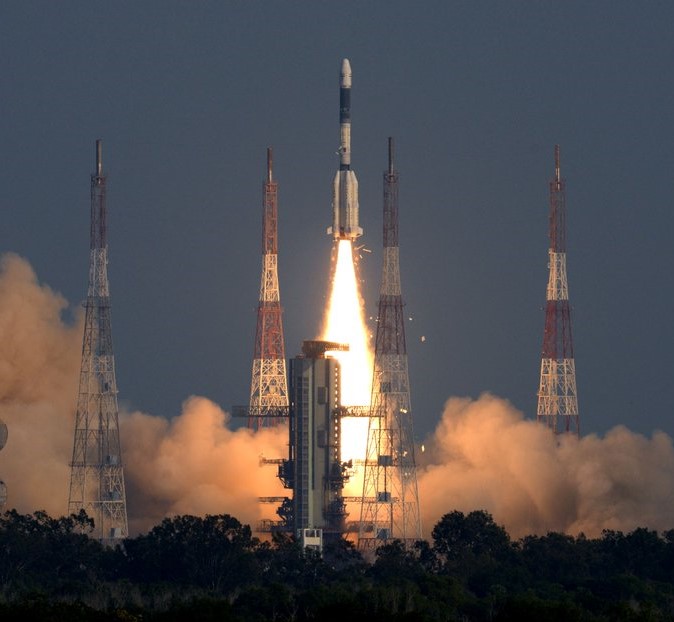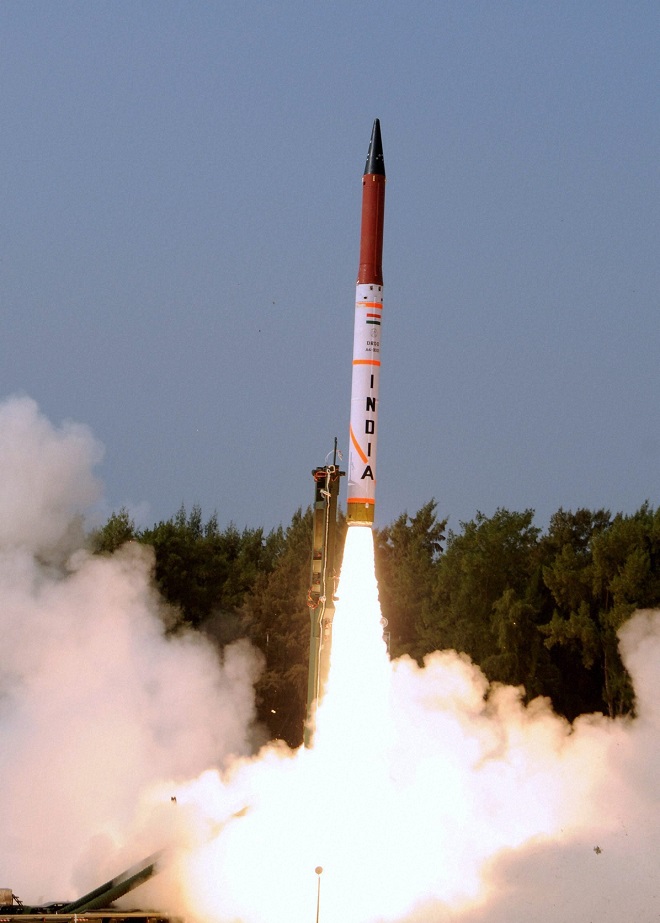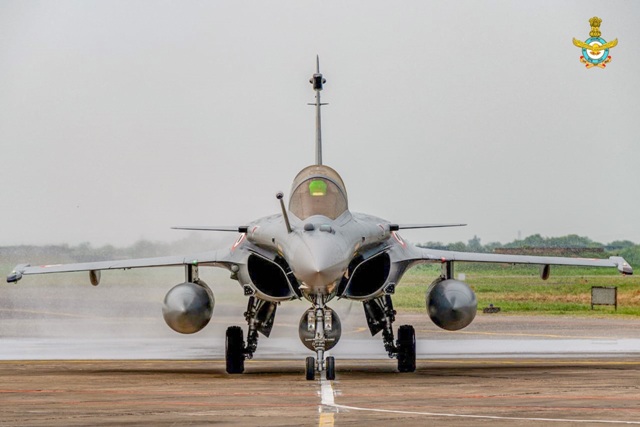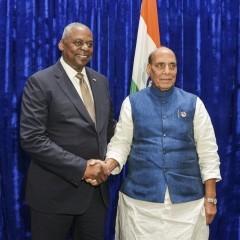
ISRO's GSLV-F11 rocket carrying the IAF's dedicated communications satellite GSAT-7A lifts off from Sriharikota, India. Photo: ISRO/Twitter
By Ritu Mousumi Tripathy
ISRO – the flagbearer of India’s globally-acclaimed space programme – has drawn the curtains on the year 2018 with a highly successful note. Giving a major strategic boost to the Indian Air Force (IAF), the space agency on 19th December 2018 has successfully launched a dedicated military communications satellite, GSAT-7A, exclusively designed for the country’s air wing to strengthen its network-centric operations.
The latest launch comes over five years after India’s first indigenously-built defence satellite developed for the Navy was launched by the European space consortium Arianespace from the Kourou spaceport in French Guiana.
The GSAT 7 satellite, launched in August 2013 by an Ariane-5 rocket, is being used by the Indian Navy for real-time communication among its maritime assets, including warships, submarines, aircraft and ground systems. The satellite has especially helped the Navy to keep a vigil on the strategically important Indian Ocean Region (IOR).
Since the launch of that first dedicated defence satellite, the Indian Space Research Organisation (ISRO) has come a long way.
Dedicated military satellites have become important strategic assets in the 21st century. Powerful nations across the globe have given increasing thrust on harnessing space power to strengthen their national security and bolster strategic and military capability. While the US and Russia have orbited scores of such satellites meant for classified operations, China too has joined the race in recent years by sending a number of satellites into space intended for military intelligence, reconnaissance and related operations.
Off late, India, which boasts of a robust civilian space programme, has also decided to steadily leverage on its growing space prowess to enhance its national security while protecting its strategic interests. From successfully orbiting the indigenous “eye-in-the-sky” Cartosat-series of remote-sensing satellites having both civilian and military applications to launching dedicated satellites for its Navy and now, for the Air Force, India has finally achieved some success in this direction.
The total number of satellites being used by India for military purposes, including for surveillance, navigation and communication roles, has gone up in the past few years. ISRO, however, has shied away from directly admitting the exact military applications of some of the satellites it has launched in recent years.
The Indian Armed Forces over the years have raised their demand for more number of satellites exclusively dedicated for military role. Such space-based assets have become highly critical instruments in achieving network-centric operability and net-centric warfare (NCW) capability.
Now, with a dedicated satellite for the Navy and, one for the Air Force, India has certainly moved ahead in this direction.
The successful launch of GSAT-7A by an upgraded GSLV MK II (Geosynchronous Satellite Launch Vehicle) rocket from ISRO's space centre in Sriharikota is another important technological milestone by ISRO. The GSLV rocket, powered by an indigenously developed cryogenic engine, has successfully placed the 2,250 kg satellite in its designated geostationary orbit. This is the heaviest satellite lifted by the GSLV with indigenous cryogenic stage.
The GSAT-7A advanced communication satellite is set to facilitate secured mode of communication for the Indian Air Force. Dubbed as "Angry Bird", the satellite would enable the IAF to interlink different ground radar stations, ground airbase and airborne early warning and control (AWACS) aircraft. It would also help in controlling unmanned aerial vehicle (UAV) operations.
The mission life of GSAT-7A is eight years.
The satellite is likely to be followed by yet another dedicated satellite – GSAT-7C – for the IAF again to further enhance its communications and connectivity.
ISRO is expected to launch that mission in the next couple of years.
 Previous Article
Previous Article Next Article
Next Article













The Indian Air Force, in its flight trials evaluation report submitted before the Defence Ministry l..
view articleAn insight into the Medium Multi-Role Combat Aircraft competition...
view articleSky enthusiasts can now spot the International Space Station (ISS) commanded by Indian-American astr..
view article